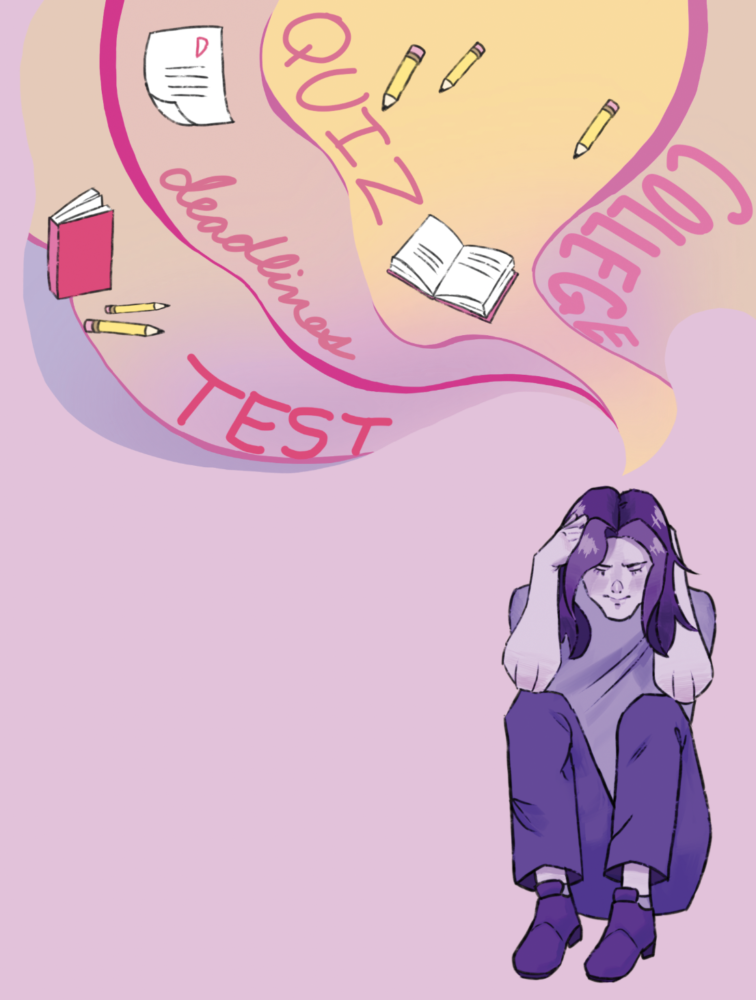*Editors’ note: This story contains content about mental health and suicide which may be sensitive for certain audiences. If you or someone you know is having a mental health crisis, call or text the Suicide & Crisis Lifeline at 988 to receive help.
Across the nation, nearly 20% of high school students report serious thoughts about suicide, according to the National Alliance on Mental Illness. In Santa Clara County, however, the numbers are higher — a staggering 33.5% of students reported experiencing chronic sadness and hopelessness in the 2017–2018 California Healthy Kids Survey.
Palo Alto has had a history of mental health concerns. During the 2014–15 school year, the Palo Alto Unified School District saw the deaths of four high school students. Five years earlier, six teens who attended Henry M. Gunn High School took their lives in the city’s largest suicide cluster. The two clusters in the span of just a few years made the local suicide rate four times the national average in 2015.
Since then, the district has made numerous changes to its wellness services in an attempt to address these alarming mental health concerns.
“In the past five years, we have placed a heavy focus on mental health,” Yolanda Conaway, the district’s assistant superintendent of equity and student affairs, stated in an email to Verde. “The PAUSD Promise [outlining the district’s goals] was developed in 2019 calling out mental health and wellness as a priority. In the 2021–22 school year, mental health was elevated as one of the district’s top five priority areas.”
“The district is very aware that students are reporting stress and anxiety related to school and school demands.”
— Yolanda Conaway, assistant superintendent of equity and student affairs
Conaway said she believes that PAUSD has made significant progress in its wellness approach by implementing more school-based mental health support.
“Unlike many districts, we have wellness centers at all secondary sites,” Conaway said. “We have moved away from reliance on external mental health professionals and are hiring and training qualified mental health therapists who are part of our school community.”
The heightened expectations of students in PAUSD and surrounding districts have led to the increased percentage of students with chronic sadness, according to Conaway.
“The district is very aware that students are reporting stress and anxiety related to school and school demands,” Conaway said. “School teams have begun to take a deeper look at homework and grading practices as a factor in reports of stress and anxiety.”
School board representative and Palo Alto High School senior Johannah Seah said she agrees that these expectations not only put students in a constant state of stress, but lead students to prioritize school work over seeking help.
“The largest challenge is the academic pressure and pressure to succeed.”
— Johannah Seah, school board representative
“The largest challenge is the academic pressure and pressure to succeed, which also goes hand in hand with mental health stigma and the idea that struggling equates to failure or weakness,” Seah said. “The pressure also prevents a lot of students from being able to access the Wellness Center and mental health resources.”
During the COVID-19 pandemic, PAUSD increased the number of district therapists and session lengths due to growing mental health struggles, an extremely helpful decision in Seah’s opinion. However, the limited access to wellness professionals over the past school year was problematic for many students needing counseling.
“Paly specifically experienced a shortage in therapists last year, which made it difficult for students to meet or find a therapist that worked for them,” Seah said. “I hope the district continues to fund therapist access on campus for all secondary schools.”
Nevertheless, the local teen suicide rate has dropped considerably since its peak in 2014. In 2019, the Santa Clara County Behavioral Health Services Department reported that Santa Clara County had the lowest teen suicide rate of any county in California at 15 suicides per 200,000 people.
PAUSD has been working to improve its wellness services by encouraging students to approach school counselors and reduce mental health stigma.
“One of the things I notice the most is an increase in help-seeking behaviors.”
— Yolanda Conaway, assistant superintendent of equity and student affairs
“One of the things I notice the most is an increase in help-seeking behaviors,” Conaway said. “We will continue working on these areas as there is always room for improvement.”
While student mental health has improved with the revised wellness services, the district plans to promote staff mental health support by increasing funding, hiring more personnel and improving data collection systems, among other goals.
“We have been also focusing attention on staff mental health supports but I believe we need to continue to work on this issue,” Board of Education Vice President Jennifer DiBrienza said. “The pandemic was unbelievably difficult for our teachers and staff and these are not easy jobs to begin with. We need to make sure our staff has the support they need to feel good and bring their best selves to the work.”
Palo Alto has made tremendous progress since the tragedies of the last decades, according to Conaway. The recent improvements in wellness services have helped better student wellbeing, with much still to improve.
“I am happy to see steps being taken and improvements being made over the past years when it comes to mental health,” Seah said. “I hope this momentum continues to make improvements in the systems and in [mental health] culture.”



